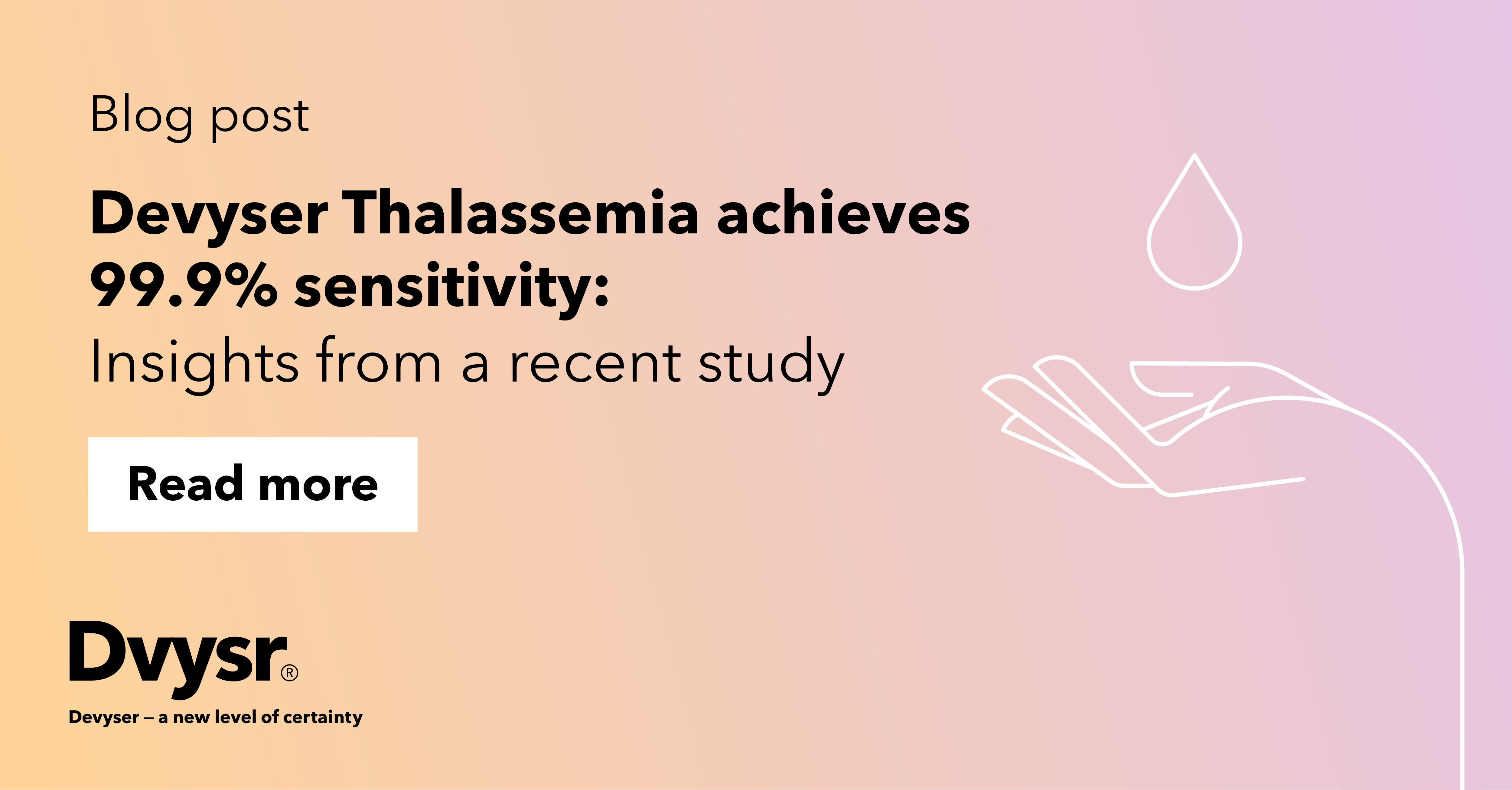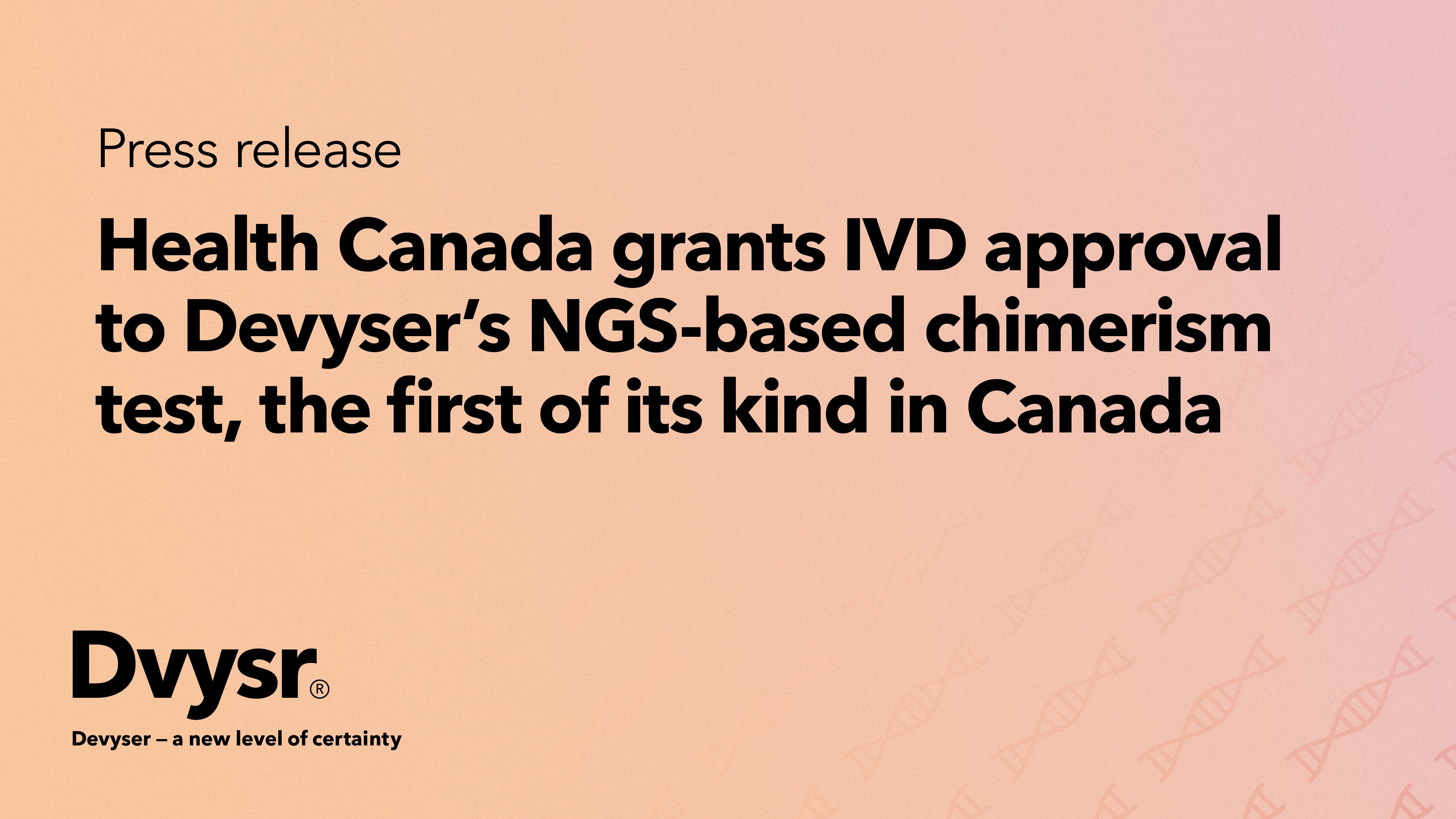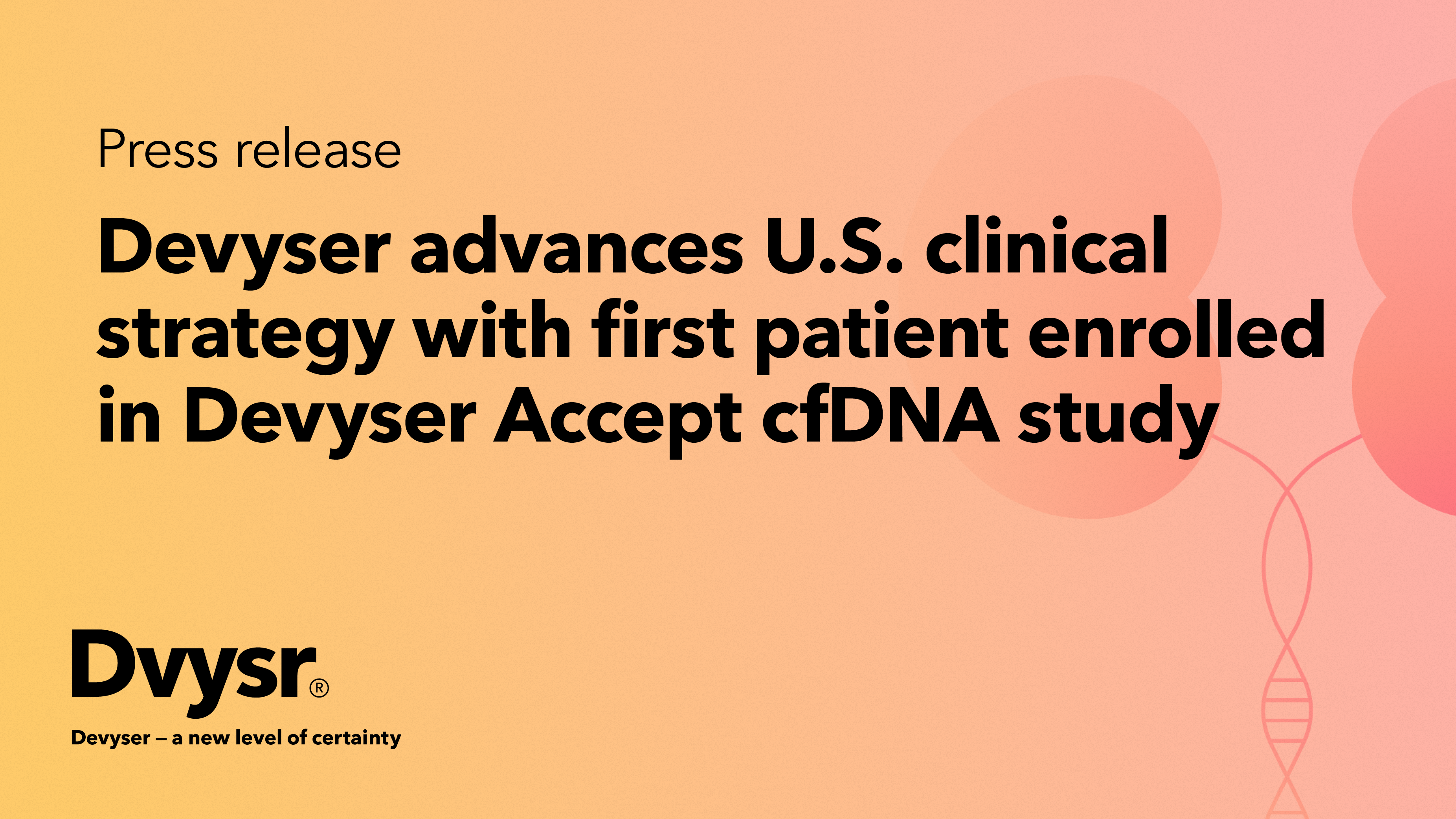Devyser secures a four-year tender in France for Devyser Compact
Devyser, a leading provider of advanced genetic testing solutions, has been awarded a new tender in...
Thalassemias

Thalassemias | January 30, 2025
Thalassemia and hemoglobinopathies are among the most common genetic disorders worldwide, affecting millions of people and posing unique diagnostic challenges. Accurate and efficient diagnosis is essential for managing these conditions, yet conventional molecular techniques can be time-consuming and involve multiple steps. Next-generation sequencing (NGS) has simplified this process, allowing for more thorough and faster analysis.
A recent study conducted across four Italian diagnostic hubs evaluated the use of the Devyser Thalassemia assay, an NGS-based solution, in detecting genetic mutations associated with thalassemia. The assay demonstrated efficiency and precision by analyzing alpha- and beta-globin genes in a single assay. Below, we summarize the study’s findings and their relevance to thalassemia diagnostics.
Key findings from the study
The study, which included data from 2,649 individuals, highlighted several important observations:
These findings show how the Devyser Thalassemia assay can provide a detailed understanding of genetic variations, supporting more accurate diagnosis.
Challenges in thalassemia diagnostics
The study also highlighted certain regions of the genome that pose challenges for genetic testing of thalassemia. These regions, such as those involving the α3.7 and α4.2 deletions, are highly homologous and large and, therefore, challenging to detect deletions. Balanced deletions and duplications often require additional validation techniques, such as MLPA or Sanger sequencing, to confirm results.
Such mutations further complicate interpretation due to their subtle effects and difficulty distinguishing them from benign variants. These challenges are not unique to specific assays but reflect the inherent complexity of certain genetic regions in thalassemia testing. Refining diagnostic techniques and combining complementary methods remain essential to addressing these gaps.
Conclusion
This study illustrates the role of the Devyser Thalassemia assay in improving the diagnosis of thalassemia and hemoglobinopathies. The assay offers a reliable approach to understanding complex genetic conditions by enabling broad mutation detection and reducing diagnostic times.
You can access the complete study here or contact us to learn more about Devyser Thalassemia.
Disclaimer: Devyser products are distributed worldwide. Not all intended uses and applications mentioned here are available in every country. Please consult your local sales representative for details.

Devyser, a leading provider of advanced genetic testing solutions, has been awarded a new tender in...
Read More

Devyser is proud to announce that One Lambda Devyser Chimerism and Advyser Chimerism have been...
Read More

Devyser today announced that the Centers for Medicare & Medicaid Services (CMS) has issued its...
Read More

Devyser today announced the enrollment of the first patient in its Devyser Accept cfDNA clinical...
Read More